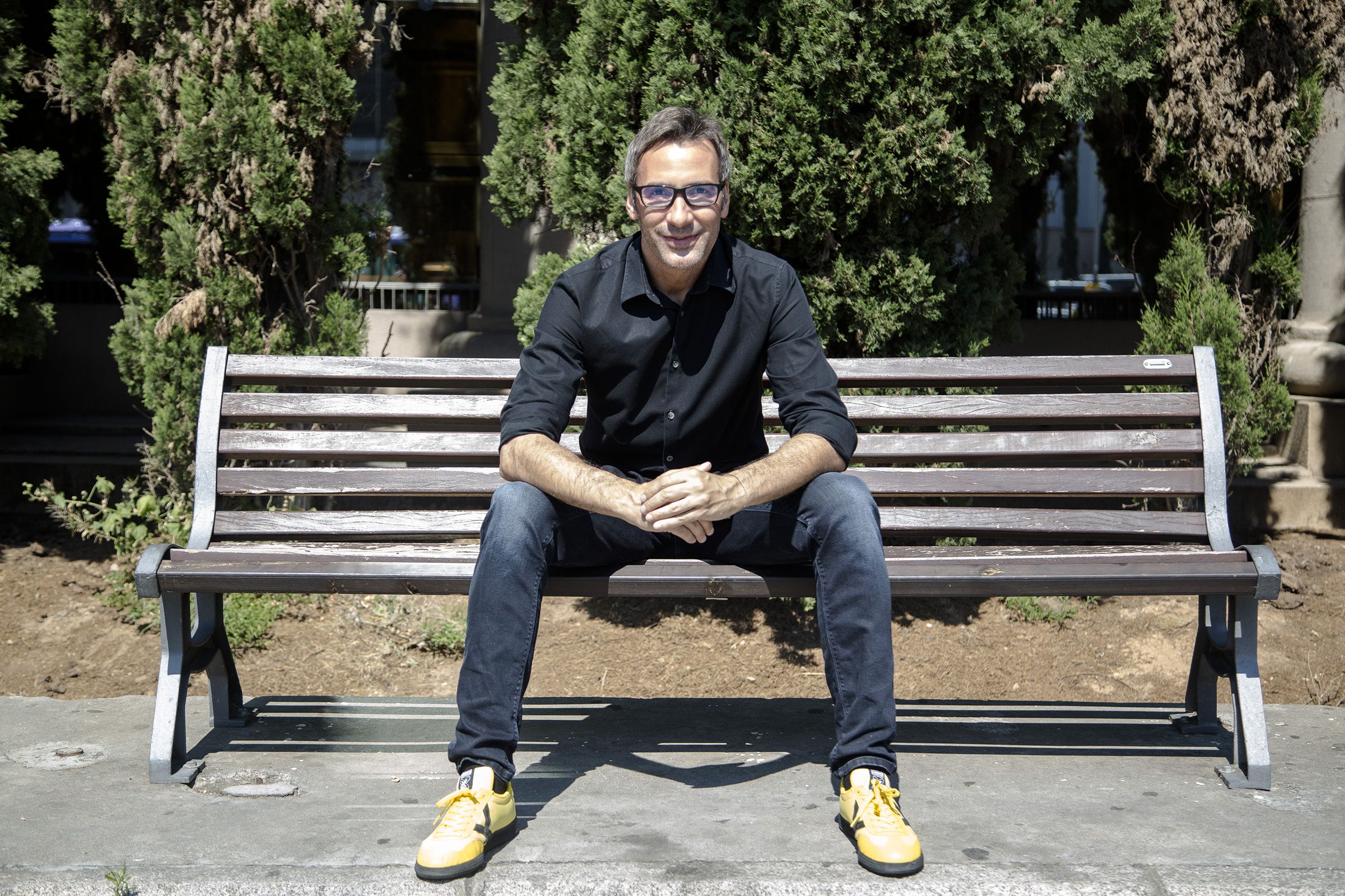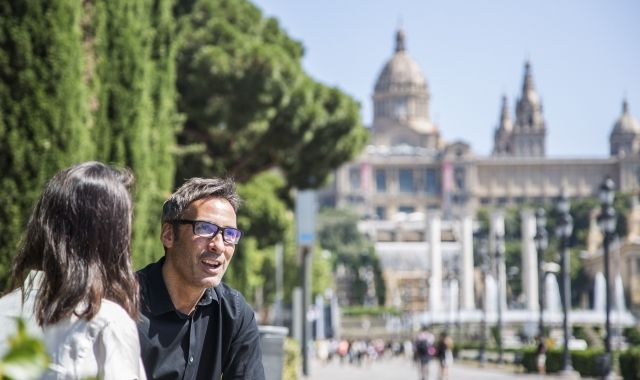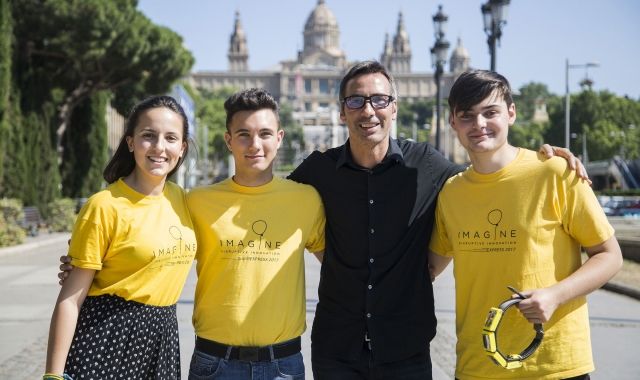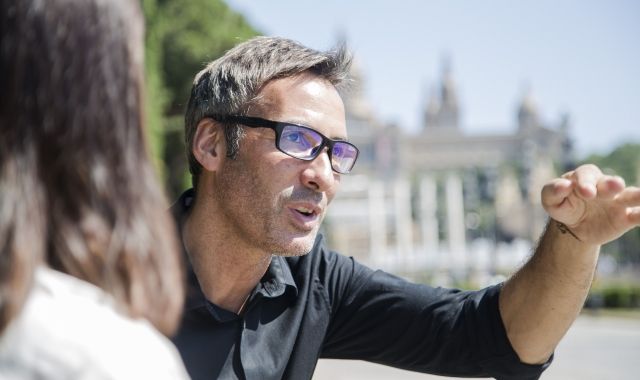
Xavier Verdaguer is one of those who believes that we can all innovate. "It is a matter of method and attitude, recovering the creativity you had before you were seven is possible." Verdaguer began as an entrepreneur 20 years ago in the sector of technological innovation; since then he has set up more than 10 companies among which stands out Imagine, a creativity programme that began in Silicon Valley in 2011, and through which have passed more than 400 entrepreneurs.
In a fortnight’s time he goes to San Francisco, his second home, with executives from Inditex, Fluidra, Racc and Audi mixed in with 20 young entrepreneurs. In August he is off to Latin America and then to Africa in November. "Travelling is an essential part of our methodology," he tells VIA Empresa in an interview.
What do all of Imagine’s programmes have in common?
That they bring together people who do not know each other, each with a talent or a special attitude. The strong point is the methodology, it is the same whether we are running it in Latin America or Europe or in a centre in San Francisco, we always apply the Lombard Method: four stages (from the problem to the solution): inspiring ourselves in the problem, generating ideas, prototyping and communicating. And finally the have the transformation of people in common. In the end we have seen that the vital experience of running it in Latin America or Africa is amazing but now with RACC we have done a weekend Imagine and the participants left transformed. We do not do training, we do transformation. And it is not a consultancy, we come from the world of entrepreneurship; what we do is design doing, not design thinking.

Photo: Àngel Bravo
How do you create a scaleable creativity programme?
The starting point is alway the same, companies that set out challenges and entrepreneurs that take up the challenge. The model we have found is that of managing each programme. For example, Imagine Àfrica will be managed by Julie Chrysler, an American woman from Cisco who knows the terrain. Corporations, organisations, authorities, foundations... There is always some large organisation with resources that needs to apply the dynamics of entrepreneurial innovation. The last Imagine we did was in Bocconi in Italy, with a group of MBA students from Milan University and the main sponsor was Generali Seguros. The company’s challenge was, 'how can I make Millennials want insurance and to save money?'
"There is always a large organisation with resources, clients or users that needs to apply the dynamics of entrepreneurial innovation"
Highlight some of the projects that have been carried out.
I would highlight the last project presented this week at Bizbarcelona: Smartdog; a project that brings together everything we are looking for at Imagine. Highly innovative, a young group have invented a smart collar for pets to help the loneliness felt by elderly people. When the collar detects it is going to rain, it warns the old person that they will need to take their umbrella, or when it is time for them to take the blue pill, the collar lights up blue. It has been created by youngsters of 17 and 18, who do not know each other, and who created this project in the Imagine Express and presented the first prototype at this year’s Mobile World Congress. This was a challenge from the Catalan government during iFest: ideas to solve and improve the loneliness of the elderly. We are now at a stage of finishing the prototype, but we have already spoken to Suara, the leading cooperative in home care that happens to be setting up an accelerator where this project can go. In fact, some 60% of the projects that have come out of Imagine end up being implemented in some way! Sometimes they pivot a lot, sometimes the company takes them on, examines them and changes them... Yet, recently increasingly less. Corporations now understand what this programme is about and they are interested in setting up their own innovation hubs.

The three young 'Dreamers' that created Smartdog, during Bizbarcelona. Photo: Àngel Bravo.
Managing innovation in a startup and in a large company is not the same thing.
No, and the startup-large corporation relationship is win-win; they are not competitors. The entrepreneur needs two things: funding (resources) and clients, two aspects that the large company has. On the other hand, the startup can speed up corporate creativity. The challenge is to bring these two worlds that speak different languages together. We have achieved this with the Imagine programme; executives without ties and 16-year-old youngsters work together to implement creative ideas.
"The startup can speed up corporate creativity"
Nowadays it seems you cannot survive without an accelerator...
It’s true and in many cases it is just marketing but there are also those who do a really good job. For example, one case we work with is Fluidra: they have an internal vertical accelerator for the swimming pool sector. There is now an engineer at the company building a team of two young entrepreneurs from another sector, preparing a prototype to go into the accelerator. In four months they will have an MVP to launch on the market. RACC has also set up a digital hub; the director general of Uriach came with us on the Imagine Express... you have to show by example.
You always say that we can all innovate. Is the person who innovates also the one to show and lead the way?
We all need to innovate and to have the conviction that everything can be improved, it is an attitude. I do not believe in innovation departments. When we do contests to detect creative talent inside a large company, it is not always the director of innovation or new technology who wins.
"We all have to innovate and to have the conviction that everything can be improved, it is an attitude. I do not believe in innovation departments"
In a corporate environment, what are the values that incentivise innovation?
Fostering the entrepreneurial culture from the management. You cannot ask the employees to devote 20% of their time to innovation,... there has to be an attitude of trying to constantly improve. Instead of taking the complaint on board, they have to take the proposal and culture of risk on board. Publicly celebrating these new proposals, even if they fail. Internal training is usually the tool used to make all of this happen. I have reservations about this method, of shutting 50 people together at a design thinking conference... It is much more effective to make these people go through an experience in which they realise their creative potential, through a real challenge that they can implement within the company. This is not theory, it is practice.

Photo: Àngel Bravo.